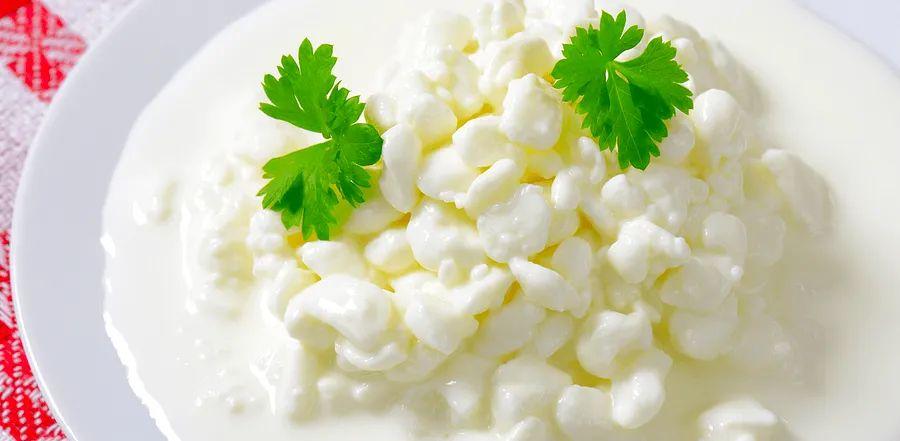What Are Curds and Whey, Anyway?

First published in 1805, the well-known nursery rhyme 'Little Miss Muffet' raises an interesting question: What exactly is curds and whey? Let's dive into this mystery.
Curds and Whey: What Are They?
To understand curds and whey, it's helpful to break it down into two parts:
- Curds are a byproduct of coagulating milk, a process also known as curdling. Coagulation happens when you add an acid, like lemon juice or vinegar, to dairy. The increase in acidity causes the milk proteins to tangle together into solid masses. This process will also occur naturally if you leave milk out to sour.
- Coagulation is one of the first steps in cheese production. After the curds are formed, they're pressed and drained before different elements are introduced, depending on the type of cheese being made. The liquid that is leftover after the curds are drained is called whey.
So, as it turns out, Little Miss Muffet was enjoying a dish made from the leftovers of cheese production.
It’s not as strange as it seems. When you break it down, curds and whey are simply cottage cheese in its rawest form.

Curds and Whey vs. Modern Cottage Cheese
While cottage cheese is often enjoyed as a quick snack, light meal, or even dessert today (especially when paired with fruit), curds and whey was once a common snack when the nursery rhyme was first written.
Even if you enjoy a bowl of cottage cheese now and then, what you're eating may not be quite what Little Miss Muffet had on her tuffet centuries ago. Today’s cottage cheese is washed, salted, and drained, with cream often added to enhance its texture and flavor.
The curds and whey from back in the day likely had a sharper, more tangy taste than the cottage cheese we know today, due to the natural acids that helped form the curds and influenced the flavor of the dairy.
Evaluation :
5/5



